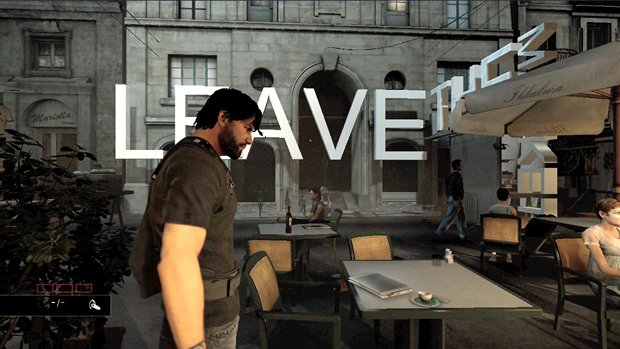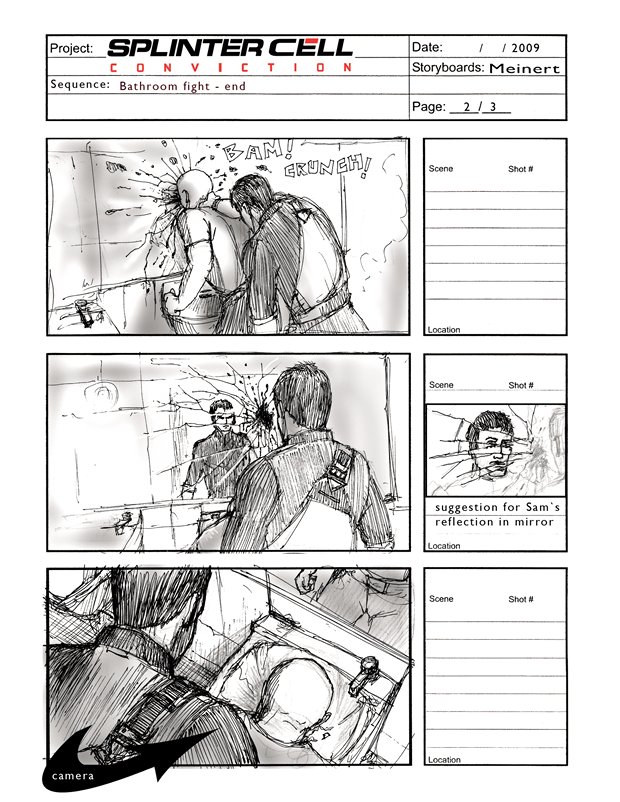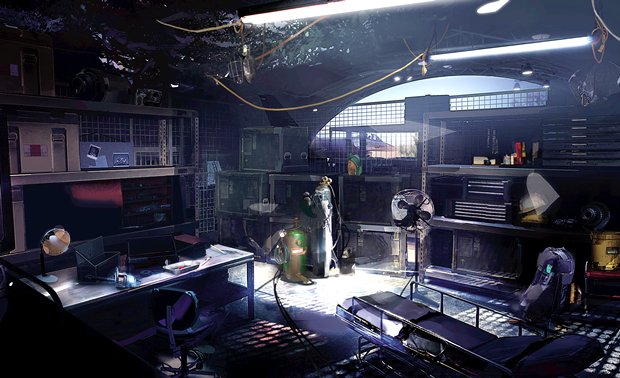The making of Splinter Cell: Conviction
Devs open up about the fall and rise of Sam Fisher
Co-op Game Director Patrick Redding came from an art and creative background, working on digital marketing with several companies before joining Ubisoft at the insistence of Chaos Theory’s Clint Hocking. He worked on Far Cry Instincts’ cutscenes and was a narrative designer on Far Cry 2 before overseeing Conviction’s entire co-op mode. He takes full responsibility for how fast everyone talks in Far Cry 2 and is sorry it sounded so weird.

“It’s still Splinter Cell,” says Redding. “It’s not about creating giant arenas with loads of cover positions where there’s lots of enemies that you have to shoot. The core of the game is manoeuvring; it’s about movement and choices.” Redding’s team needed co-op maps which supported the movement and choices of two players and needed to make certain those choices were interesting. “Single-player was driven by this narrative arc that was based on Sam’s psychology. They were driven by a much stronger aesthetic imperative,” Redding explains before describing an altogether different approach to the construction of the co-op campaign.
“If you look at earlier builds of the game, we started with geometry and basic circles of light so we could determine how much room was too much, where we needed to put cover, whether we needed to narrow the locations, what stuff we had to cut and all that. As a games designer your tendency is to try to shoehorn more and more stuff into everything but good game design is as much a subtractive process as it is additive. In the case of single-player, they actually went the opposite route where they were like ‘let’s make the space work for us’. They started with the final aesthetic treatment and then made it more readable, whereas we started with something that was extremely readable and then made it into something believable as a real place.”

The end result is two very different campaigns – one a game built atop a story, the other a story built atop a game. The mechanics are certainly consistent between Conviction’s two halves, but they play very differently by design. “It needed to be that way,” Redding concludes. “When you’re dealing with a single player your context is always defined by the sphere they carry around with them. You know exactly how far they can see and hear, you know how long it takes them to run from one point to another; you can manage streaming, the loading and unloading of AI, and all that technical stuff very easily and with a lot of confidence. When you have two players, on the other hand, it’s the classic joke of ‘how do you find the walls of the holodeck?’ – you just put two people in there and tell them to walk in opposite directions. We were dealing with that challenge right from the very beginning. It had to be a different process because we were operating under different technical constraints.”
When asked about those ideas the team had to chop from Conviction, both Redding and Beland are cagey. “I wish we’d had time for dragging bodies,” says Beland. “It’s not something you need in Conviction but I think a lot of fans would have liked it. I wish we could have done what I like to call ‘Abduction Moves’ too – certainly Uncharted 2 does them very well, where you’re in cover and you grab the guy and drag him out of view. That was planned but it’s something we had to cut.
“I’m not super comfortable talking about many more of those,” he adds, briefly mentioning a list of ideas which might be useful ‘in the future.’ “That’s it, yeah,” adds Redding when asked whether they might find their way into the next outing for Sam Fisher. “Personally, I would love for us to look at modes that emphasize puzzle play and navigational gameplay and stuff that’s highly objective-based. I think what we’ve done is used Deniable Ops as a way of showcasing a certain style of stealth action and I think we can build on that foundation with additional types of exotic gameplay.”

Splinter Cell 6 has already been announced – as if it needed to be – and is well underway at Ubisoft’s new Toronto studio. Relocating from French-speaking Montreal, Conviction’s entire lead team of Alexandre Parizeau, Maxime Beland, and Patrick Redding have relocated to Canada’s biggest city to launch Ubisoft’s new studio. “I think that you’ll see something a little sooner than four years from now,” says Beland, joking about how long it took to bring Splinter Cell Conviction to shelves.
Sign up to the GamesRadar+ Newsletter
Weekly digests, tales from the communities you love, and more
Jul 17, 2010


